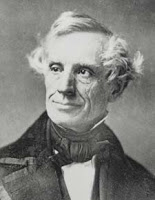In music,
leitmotif is the leading theme, the characteristic phrase, which occurs over and over again in the same composition, in reference to the same person, phrase of feeling or scenic complication of in¬tense passion or action. The phrase strikes the note of these several crises or conjunctures and recurs whenever they are repeated. While many operatic composers, such as Mozart and Weber, have employed the expedient of the leading theme or leitmotif, Wagner does so more than any other modern musician. In his
Leitfaden, or analyses of his operas, in which he lays bare some of the secrets of his artistic workmanship, he shows that he has consciously individualized every one of his characters, every change in the scenery or action of the drama, or in the emotions and moods of the
dramatis personae, by the introduction of a specific musi¬cal theme or leitmotif, which he employs throughout the opera to suggest the same thing. This theme is worked upon and varied with the masterly skill which Wagner possesses in fugue and part writing. Thus in his ‘Parsifal,’ Klingsor, Kundry, Parsifal, Amfortas and the Flower maidens are all ushered in with a special lead¬ing theme or leitmotif for each.
There is a special theme for the Eucharist, for the spear (
Speermotiv), for the Holy Grail (
Gralmotiv). The children's voices raise a strain ‘Faith is still alive’ to the notes of the
Glaubensthema, or faith-motive. There is a
Leidensmotiv, to express the grief of Amfortas; there is the
Doormotiv, expressing the promise of help; the
Zaubermotiv, suggesting the devilish power of witchcraft, while the mother's sorrow is suggested by the Motiv des Herzleids, the heart-grief's theme. The Bell-theme, with its pealing sound, the Ride-theme, suggesting the clatter of horsehoofs, the Good Friday theme, with its characteristic chords, each in its way, are powerfully suggestive, and when once recognized. their recurrence has a powerful effect.

















































